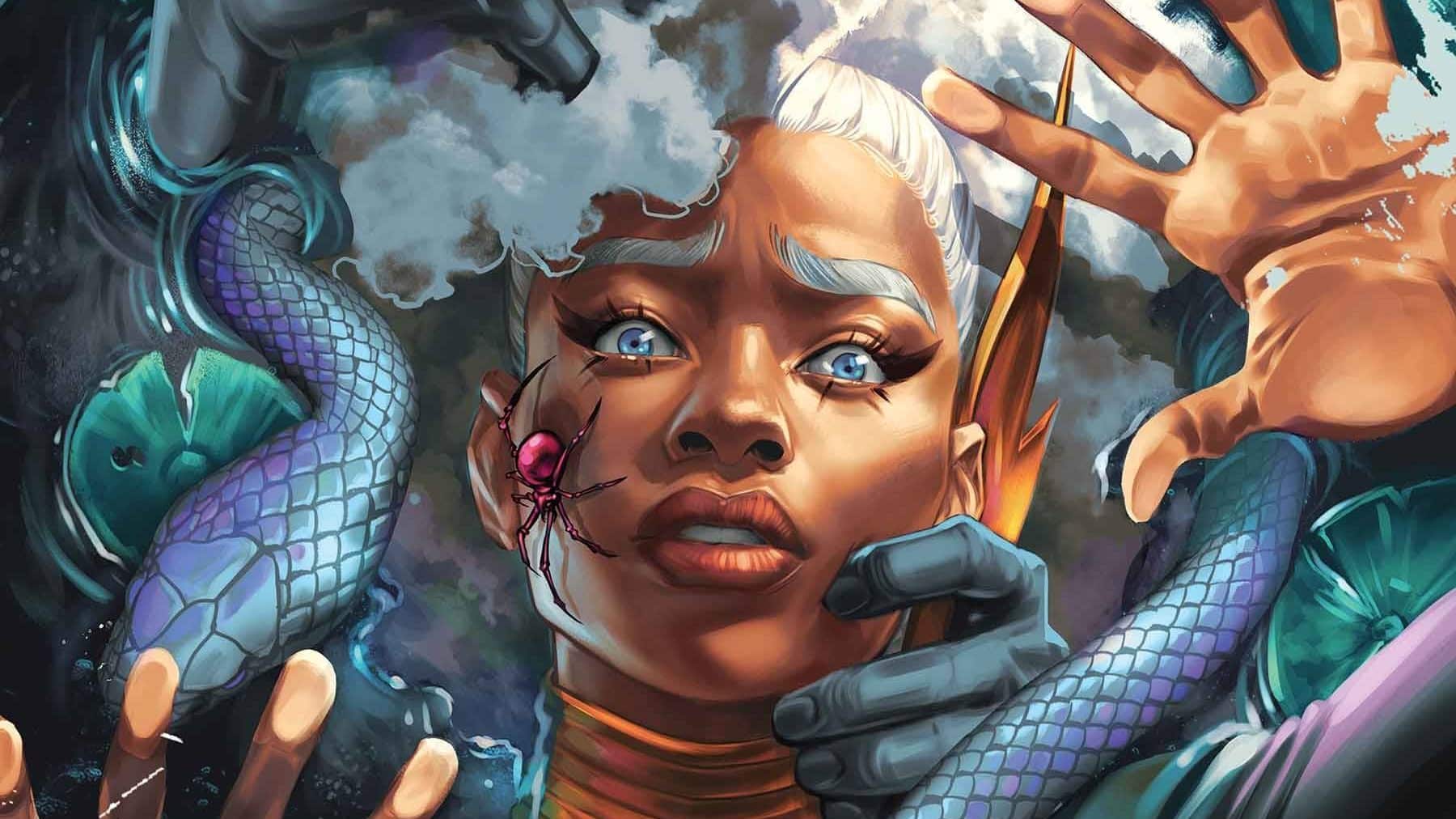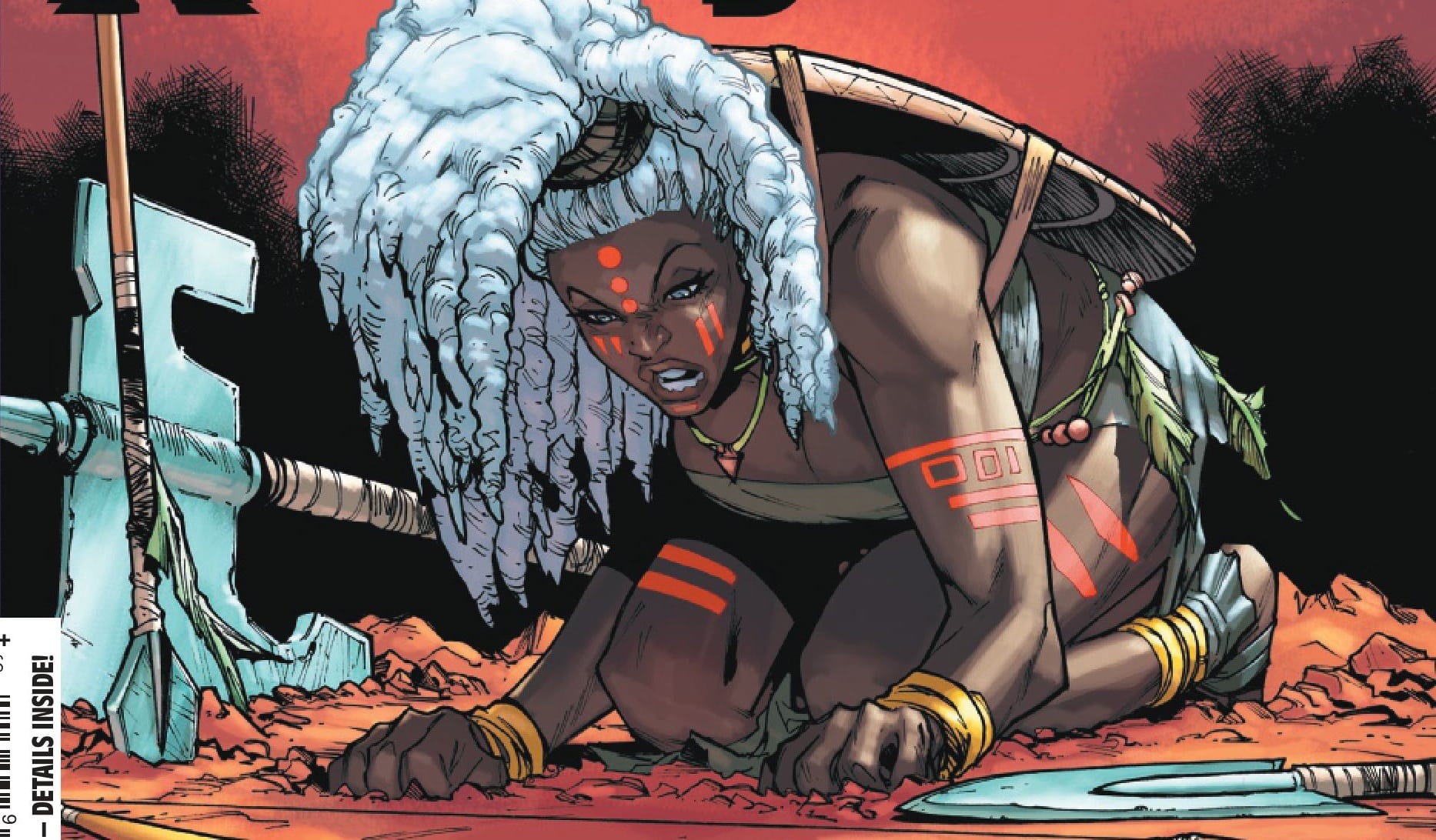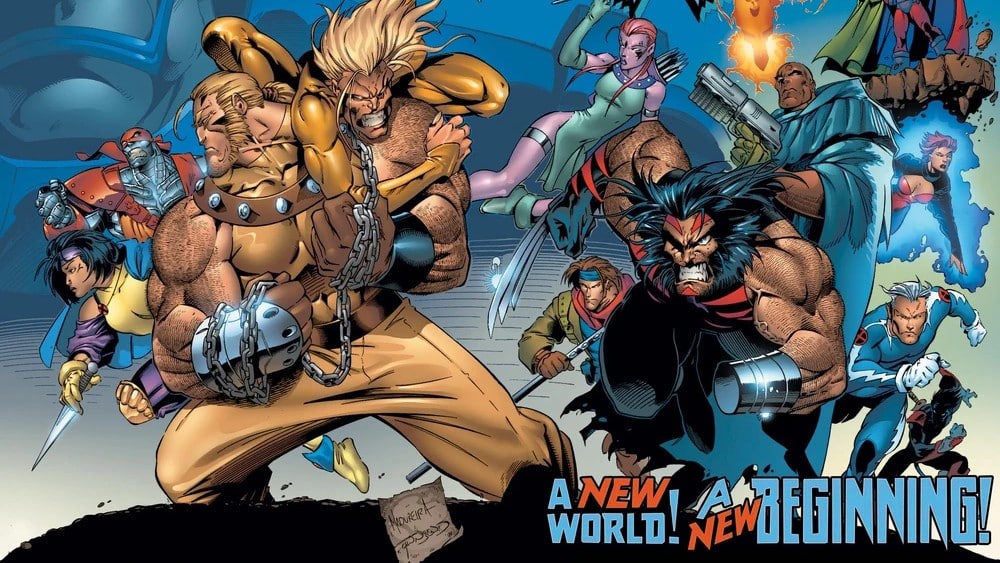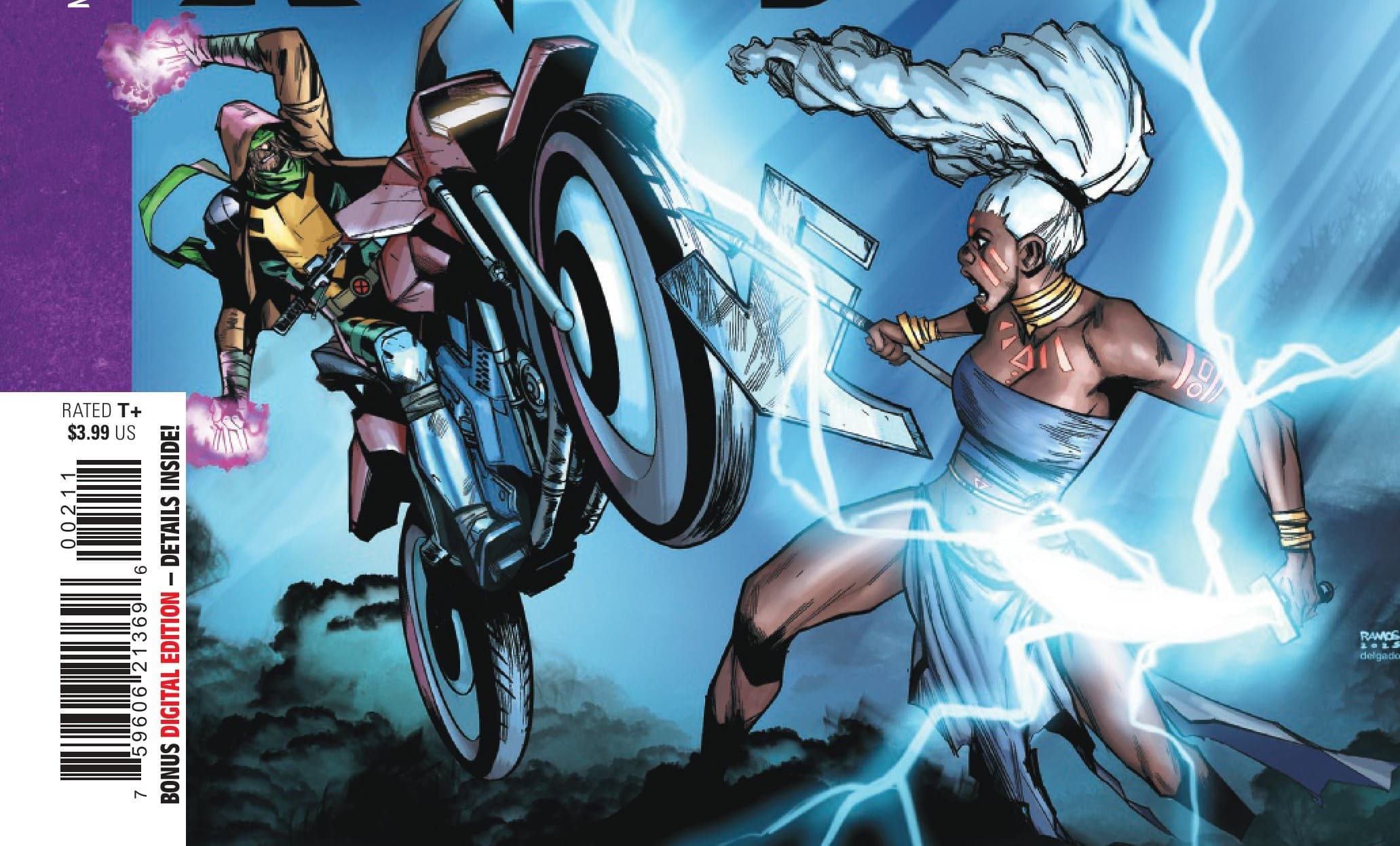An unknown form of radiation poisoning from the Oklahoma incident has turned her cells into ticking time bombs. As her final hours count down, will she find a cure for her illness at Night Nurse’s new superhero hospital, or will it require enchantments from Doctor Voodoo to save her life? Storm #2 is written by Murewa Ayodele, drawn by Lucas Werneck, colored by Alex Guimaraes and lettered by Travis Lanham.
Intractably alone when she needs care, Storm again turns her energy outward, saving others. To see this beautifully drawn Black woman sacrifice her weathered body for others’ salvation, only to be rejected by those same others out of pure, unbridled bigotry? Familiar. And in this rejection, we hear how she feels — if she’s frustrated or flustered, if she’s given up on those people or views their rejection as justification to give and love more — not from her own mouth, but from that of an omnipotent narrator, articulating her feelings sans her voice.
So a Black woman, held to impossible standards, trying to save a world that rejects her because of who she is, without the ability to use her true and honest voice?
Probably not the comic I wanted or needed to read after Nov. 5, but here we are.
The plot is simple: Storm saves a ship full of the unappreciative, retreats to her sanctuary where she gets progressively sicker, seeks care from a mystically hidden hospital for the “extramundane” and is referred — with (literal) prejudice — to Doctor Voodoo, with less than a few minutes before her radiation sickness kills her.
A lot, sure, but it moves fairly quickly.
Storm #2, then, despite being an engaging read with incredibly beautiful art, still frustrates, as Ororo’s isolation from community and her dissonance from autonomy keeps readers from appreciating her heroics with the depth her character deserves.
Community of Care
The whole point of X-Men Red, its predecessor series SWORD and, arguably, the entire Krakoan era, was the idea of mutant community: mutants, from across ideological lines, engaging each other, helping each other, forming imperfect communities with each other for the good of the whole. From Krakoa itself feeding on psychic energy to the communes of Arakko, the era was filled with mutants helping, hurting, loving and lashing out at others in their own community. This is what Storm, as regent of Arakko, leaned into — forming a community based on equality and care, over separatist, prejudiced individualism.

So why is Storm alone in a sanctuary now, removed from community and care, literally above the people she worked so valiantly to form community with?
I understand switching eras means some things will be lost in translation; that some things — some ideas, interesting and not — will, out of either necessity or convenience for the next writer, regress to some kind of norm. Still, it’s jarring to see a person for whom the idea of community was such a large part of their recent (and not so recent!) history, working through so much alone.
One is the Loneliest Number
And it is in this loneliness that the book fails Storm, both as a character and as a characterization: People need community. Black women across the diaspora, maybe more than ever, need community. And to see Storm circumvent, if not ignore the community she already has (no trips to Dr. Cecilia Reyes or a Wakandan doc?) for a mystery doctor doesn’t make sense. Not for the character, who had a deep community of friends and associates with whom she could confide in, nor for Black women, who too often find themselves having to bear the brunt of so much medical malpractice.
Still, the comic clearly articulates its gist of the new normal: Storm’s sacrifices have isolated her, just as the sacrifices of the X-Men and mutants, the groups she most identifies with, have isolated them from humanity. Her sickness is a metaphor for the sickness of sacrifice, and her journey for healing is as much about her own health as it likely will be for the well-being of her people. I get it. I appreciate it.
I just don’t like the road we’re using to get there.
Voice of the People
That said, maybe the path would feel more purposeful if Storm was the one expressing how she feels about walking it; if we had an understanding of why she chose to be alone, or how she feels being rejected and isolated, or what she hopes her sacrifices will yield.
Is she afraid? Is she resigned? Is she, finally, ready to die?
We don’t know. We’re robbed of contextualization because she does not speak for herself. She becomes akin to a lead in an RPG, a character that does not act, but is acted upon. The brilliant art of Lucas Werneck does a yeoman’s job of translating her feelings on page — so much so, that maybe the point of narration is to allow Lucas to translate her emotion in a way words can’t. Still, Storm deserves to speak for herself, with the wherewithal to own her own voice and thoughts.

Thus we’re left with a comic that ends with her would-be suitor, Oblivion, teasing his admiration, and her would-be savior, Doctor Voodoo, confidently teasing his remedy. I appreciate Voodoo’s placement here — with Doom as Sorcerer Supreme, and Strange as the de-facto leader of the mystic arts, Voodoo’s presence in other places can feel like it lacks purpose. Leading a school (Strange Academy) is a beautiful thing, but it feels beneath one of the most powerful mages on the planet. Here, though, he feels empowered and confident in his brief appearance. Here’s hoping his characterization can continue to grow.
And really, growth is what we’re looking for here: growth for the characters, growth for the world they inhabit, a growing vocabulary with which we can describe Storm and with which Storm can describe her world. That the vocabulary — and the world — feels so constricted works counter to the universe-expanding stories teased. Here’s hoping that the growth of her experiences will yield her the ability to grow into her own voice, joined by a chorus of the community of her choice.
X-traneous thoughts
- The implication is that Oblivion knows Storm is dying, and anxiously awaits her arrival in whatever realm of reality they (does Oblivion have a gender?) reside. Cool!
- Moo deng might be cool, but let’s not get it twisted, hippos are evil, and they absolutely have the best PR team on Earth.
- X-Men slander by Dr, Daye doesn’t feel specific or earned. Was it bad that mutants were being resurrected? Was he offended that people lower on the tier of power weren’t being resurrected (a fair critique) or that non-mutants needed help (maybe less fair given the circumstances of mutants always being last)? What exactly did you need the X-Men to do for you (besides pay you) that they did not do? This kind of clarity builds characters and connections, and without that clarity, the work reads like anger in search of a source.
- I appreciate the cultural thought Ayodele gave to Voodoo, adding a touch of his Youruba background into the lexicon of the character.
- Finally, even though Krakoa the land mass is gone, do Krakoans still exist under the banner of the U.N.?
Buy Storm #2 here. (Disclaimer: As an Amazon Associate, ComicsXF may earn from qualifying purchases.)
A proud New Orleanian living in the District of Columbia, Jude Jones is a professional thinker, amateur photographer, burgeoning runner and lover of Black culture, love and life. Magneto and Cyclops (and Killmonger) were right. Learn more about Jude at SaintJudeJones.com.






